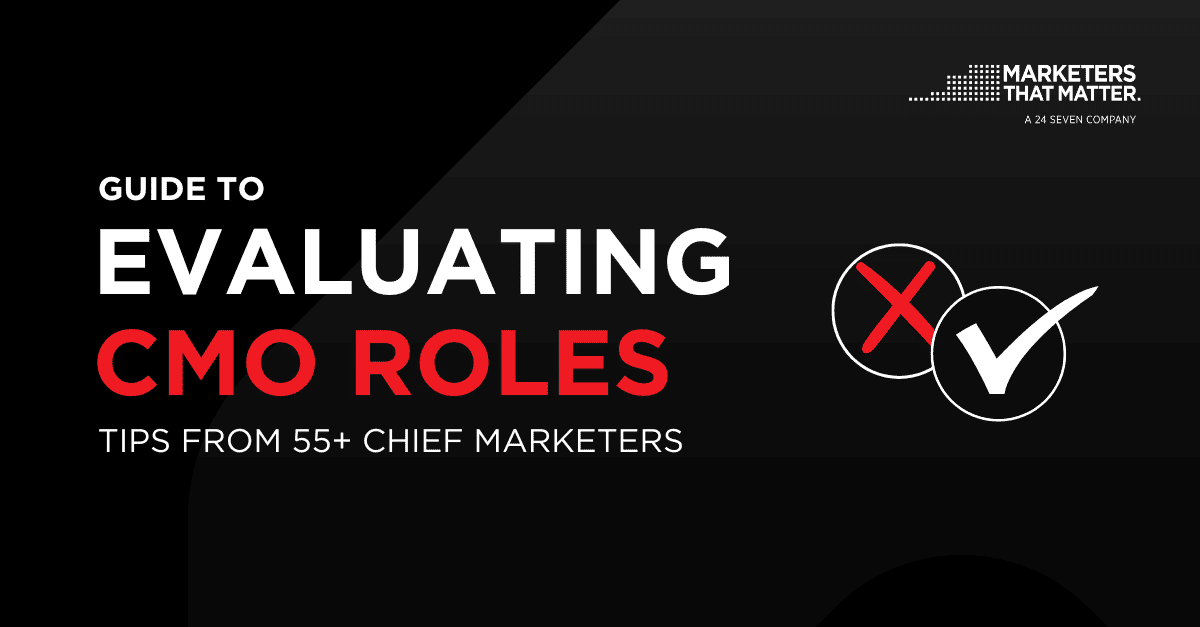Key Questions, Tips, and Strategies from 55+ Chief Marketers
When evaluating your next CMO role (or reexamining your current one), it is vital to understand the environment in which you are operating, your very specific role expectations, and the capabilities required to achieve your objectives.
This guide is created for current and aspiring CMOs from the input of 55+ CMOs from the largest companies in the world and hot new challenger brands. Together, with the help of CMOs who are part of MTM’s Marketing Boards, we created a framework to help you think about each of those important factors, including key questions to ask, key considerations, and tips from CMOs who have experienced it to help fellow leaders better assess the fit of a CMO role:
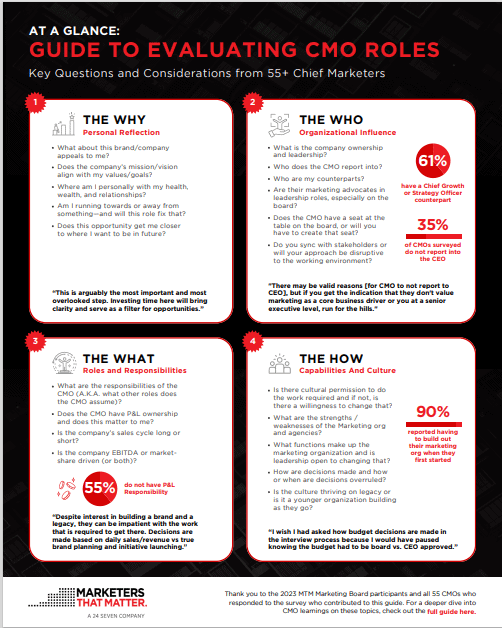
Here’s a quick look at the framework and a helpful “at a glance” one-pager:
- The Why (Personal Reflection)
- The Who (Organizational Influence)
- The What (Roles and Responsibilities)
- The How (Capabilities and Culture)
NOTE: Given the role of the CMO is complex and disparate across companies and industries, this guide is not meant to represent all possible scenarios but is hopefully helpful in triggering a specific suite of questions that would be most relevant for you and the opportunities you are evaluating.
The Why (Personal Reflection)
Key Questions to Ask
- What about this brand/company appeals to me?
- Does the company’s mission/vision align with my values/goals?
- Where am I personally with my health, wealth, and relationships?
- Am I running towards or away from something—and does this role fix that?
- What am I most looking to get from my next role? (i.e. expanding skills/experiences)
- Does this opportunity get me closer to where I want to be in the future?
Key Considerations and Tips from CMOs
💡 “Be honest with your motivations and take a personal inventory of all those impacted by your move.”
💡 “[The Why] is arguably the most important and often most overlooked step during the evaluation process. Investing time here will bring a lot of clarity and serve as a filter for opportunities.”
For a deep dive into personal and professional purpose and how to think about your current state of wellness, “Antonio Lucio Shares The Realities Of Purpose Every Marketer Should Know” is a must-read.
The Who (Organizational Influence)
Key Questions to Ask
- What is the company ownership and leadership?
- Who does the CMO report to?
- Who are my counterparts?
- Are there marketing advocates in leadership roles, especially on the board?
- Does the CMO have a seat at the table on the board, or will I have to create that seat?
- Will I sync with these stakeholders, or will my style/approach disrupt the working environment?
Key Considerations and Tips from CMOs
Founder-led vs. hired CEO-led companies
- If founder-led: Understanding the level of involvement of the founder is crucial. If they’re highly involved/more in the weeds, you’ll have a lot of daily interaction and will need to spend a lot of time explaining your actions unless you specifically ask for autonomy going into the role. If they are less involved, you may feel like you have autonomy, but be very sure to align on key goals and measurements before taking off in your role.
💡“One watch-out is understanding just how involved founders are in marketing and what portions they are open to changing.”
- If hired CEO-led: Hired CEOs typically report to a board of directors, so it is important to understand the role of marketing in those board meetings and what type of ownership the board is governing – is it PE or publicly owned or VC backed? That will dictate many of the short-term and long-term decisions by the board and ultimately dictate the CEO’s objectives.
💡 “If the CEO says they’re looking for a CMO to ‘build brand,’ ask them: how do you measure this person’s success? Brand penetration and MPS scores aren’t enough. If the business is ultimately measured on revenue and EBITDA, a level of that has to cascade down to marketing. Because during downturns, people who don’t have ownership or direct influence on growth are the most at risk.”
Public vs. Private vs. Venture Backed
- Public Ownership
- Pros: Access to large pool of capital, increased liquidity, transparency and prestige, ability to attract top talent with wealth incentives, larger marketing budget, access to broader tools and markets.
- Cons: Increased scrutiny with more regulation, short-term focus to meet quarterly targets, litigation risk, challenging (lack of flexibility) to make decisions with numerous stakeholders, large, complex teams, risk averse.
- PE Ownership
- Pros: More control with a smaller group of investors, longer-term Focus, fewer regulations, more flexibility and agility, and customized solutions, owner mindset, shared portfolio resources.
- Cons: Limited capital access, less transparency, risk of conflict between private equity and stakeholders, potential for sudden shifts from long to short-term focus
- Venture Backed:
- Pros: Entrepreneurial environment, owner mindset, agility, collaboration across portfolio, shared portfolio resources, upside potential if equity involved, personal growth trajectory, ability to experiment
- Cons: Brand not as stable, shifting strategy, short time to produce results, less of an appreciation for marketing, usually product-centric cultures, higher potential for failure, small budgets
Reporting Structure: If not reporting to the CEO
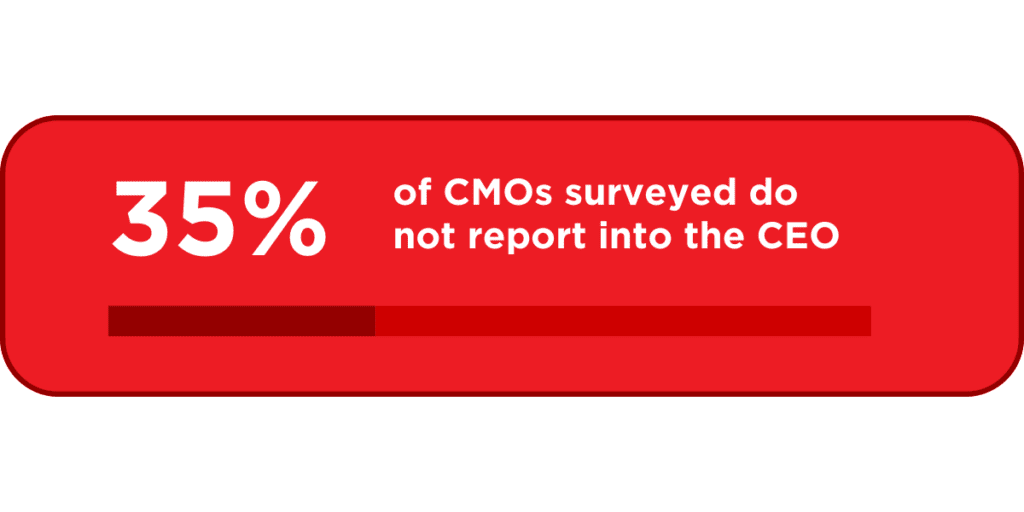
💡“Find the spheres of influence in the organization and outline how you drive change or add value against the realities of the environment you’re pursuing.”
It is key to understand the ‘why’ behind it. It could be about practical alignment within the organization based on who truly leads the business. For example, a media/tech CMO (who owns a P&L) reports to the COO because the COO leads the business side of the company (i.e. total revenue: BD, advertising, COGS, etc.) while the CEO focuses on the tech side.
The most important factor for success is where in the organization the CMO will have the most support and freedom to operate. If the CEO is not well versed or skeptical of marketing, it can be an advantage to have an established ally who provides a range of motion.
Four critical things to put in place to thrive under this reporting structure:
- Regular direct engagement with and access to the CEO
- Inclusion in relevant senior executive decision-making and information-sharing groups (i.e., exposure to the board)
- Title and comp that are commensurate with your responsibility/impact vs. your reporting relationship
- Acknowledgment that if the structural synergies aren’t being realized, a move to reporting to the CEO is on the table
Counterparts
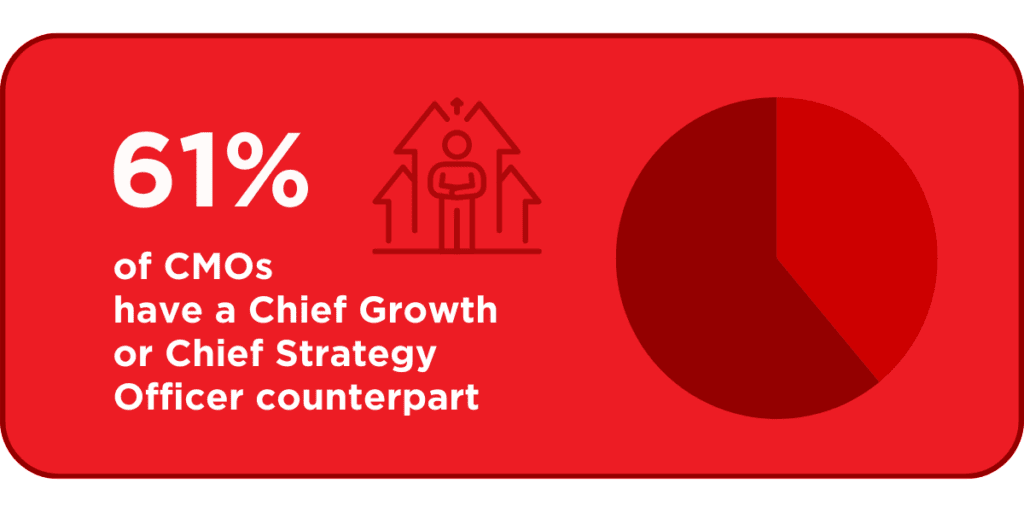
💡”Identify the overlap/crossover between the CMO and CGO role early on in the process. Ask about the success metrics for each to ensure the CMO has sole accountability for metrics tied to the business.“
No Marketing Advocates on the Board or Parent Company
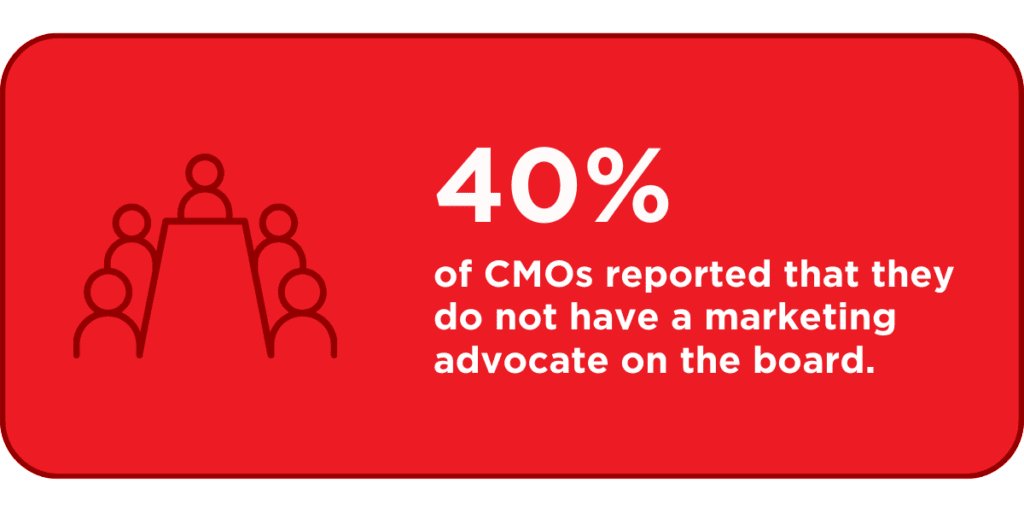
💡“Investigate your role on the board – historically, does the CMO have a seat at the table with accountability and say, or will you have to create that seat?”
💡“When I came in, I had to teach the parent company about marketing. While they are advocates now (because I show them results), it was a long road to get them there. It’s crucial to get the parent company or board on your marketing side early so they don’t interfere with your media plan and other marketing strategies.”
Tips for Creating Advocates:
- Show up as a functional expert who also understands the needs of the business, and frames strategy, milestones, and risks appropriately.
- Educate vs. update. Lay pavers of understanding in an area you want to address soon; don’t just come in trying to educate and ask simultaneously. Consider using third-party resources to do the education to add validity.
- In collaboration with the CEO, find opportunities to have workshops that get behind the curtain for the board to see the level of sophistication and potential (or particular members).
Keep in mind that not having an advocate on board is less of an impending factor if you don’t have to get their approval on marketing. For example, at a large public company, most boards are not approving ad campaigns but at a smaller, private company with a BOD, they may be weighing in more.
The What (Roles and Responsibilities)
Key Questions to Ask
- What are the additional responsibilities of the CMO (i.e. what other C-suite roles would I have to assume?), and does my compensation package reflect that appropriately?
- Does the CMO have P&L Ownership?
- How are decisions made regarding budget and how is it distributed?
- Is the company sales cycle long or short?
- Is the company EBITDA or market-share driven (or both)?
Key Considerations and Tips from CMOs
Responsibility
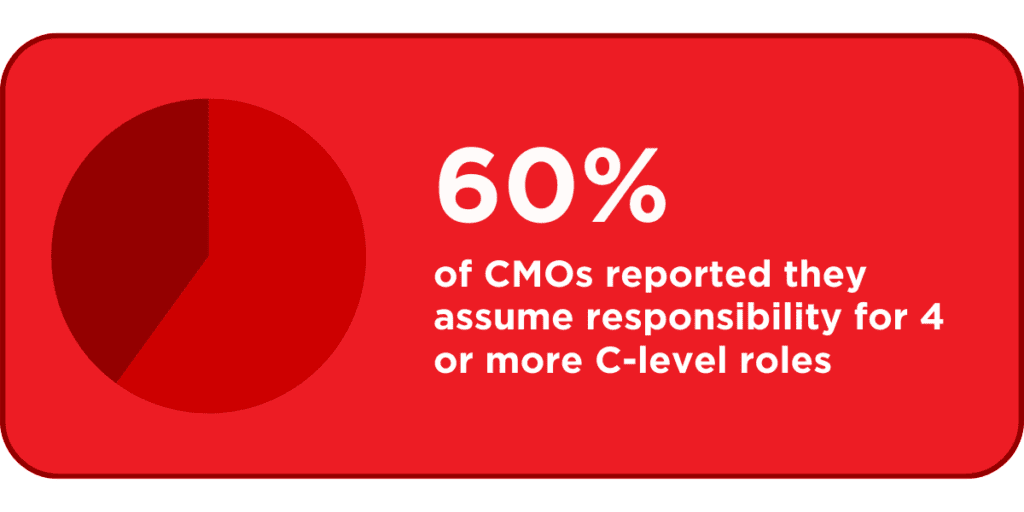
Ensure you identify the white space between other C-suite roles the company employs and the expectation for the CMO to assume those roles.
According to the questionnaire, here are the top 7 roles CMOs also assume responsibility for*:
- Chief Brand Officer: 80%
- Chief Communications Officer: 50%
- Chief Creative Officer: 50%
- Chief Experience Officer: 45%
- Chief Growth Officer: 42%
- Chief Digital Officer: 40%
- Chief eCommerce Officer: 22%
*Less than 20% (in order): Chief Customer Officer, Chief Strategy Officer, Chief Philanthropy Officer, Chief Transformation Officer
Budget Decisions
💡“I wish I had asked how budget decisions are made in the interview process because I would have paused knowing that the budget had to be board approved vs. CEO approved.”
💡“The timelines of impact for Brand spend need to be agreed across the org. Having multiple groups spending driving performance media/search just eats up so much media dollars and is a recipe for short-term optimization. Just because it is more measurable and with more data doesn’t mean it is the right investment.”
Short vs. Long Sales Cycle
- If short sales cycle: Close ties between marketing spend and revenue mean that the CEO and CFO rely heavily on marketing for overall business health and projections. It is important to have them understand what marketing is and is not capable of doing and be diligent about accurate forecasting with available information.
💡“With a short cycle, one watch out is that you will inevitably have to navigate previous commitments, and it is harder to change ways of working because the team moves so fast.”
- If long sales cycle: Longer time to make an impact as a CMO. The products/campaigns/work you touch will not be in the market for 12-18+ months.
💡“You’ll need to stay at the company for at least 18 months to see the fruits of your labor–and get credit for it in the marketplace. If you are an immediate gratification person, it’s tougher.”
EBITDA-driven vs. Market-Share Driven
- If EBITDA-driven companies: “Brand marketing is confusing because it doesn’t have definitive quantitative results. Despite interest in building a brand and a legacy, they can be impatient with the work that is required to get there. Decisions are made based on daily sales/revenue vs true brand planning and initiative launching.”
- If market-share driven: “…which as a challenger brand center branding and product evolution conversations around creating a discernibly differentiated value proposition. Segmenting customers once there is a historical fact pattern and defining a niche on which to build the brand.”
THE HOW (CAPABILITIES AND CULTURE)
Key Questions to Ask
- Is there cultural permission to do the work required, and if not, is there a willingness to change that?
- What functions make up the marketing organization and will I have support in making changes?
- What are the strengths, weaknesses and skill gaps of the marketing organization and agency partners?
- How is success defined and measured?
- Is the culture thriving on legacy or being created as a part of a younger organization?
Key Considerations and Tips from CMOs
💡“Define success, push the organization to clarify how they measure the CMO and teams’ performance. It’s not enough to qualify with your hiring manager, rather get collective input from the relevant stakeholders including the CFO, CEO, COO, etc.”
Marketing Organization
If marketing departments are bifurcated throughout the organization, watch the time you spend influencing vs. driving. Examples of areas where it’s important to be clear on R&R:
- Brand/Creative for Digital vs. User Experience/Design, which may sit outside of Marketing
- Product Strategy vs. Marketing Strategy for areas where it could be considered a ‘product’ like loyalty program.
According to the questionnaire, more than 60% of CMOs reported to have the following departments within the marketing organization*:
- Creative
- Digital
- Social
- Partnerships
- Research and Insights
*Less than 40% have CX, Comms, DTC/Ecomm, CRM, Data and Analytics, Innovation
💡”Taking the time and care to appoint your directs is one of the most worthwhile investments you can make. Prioritize that they are exemplary by your personal standards, work well together, and have deeper expertise than you in their area of focus.”
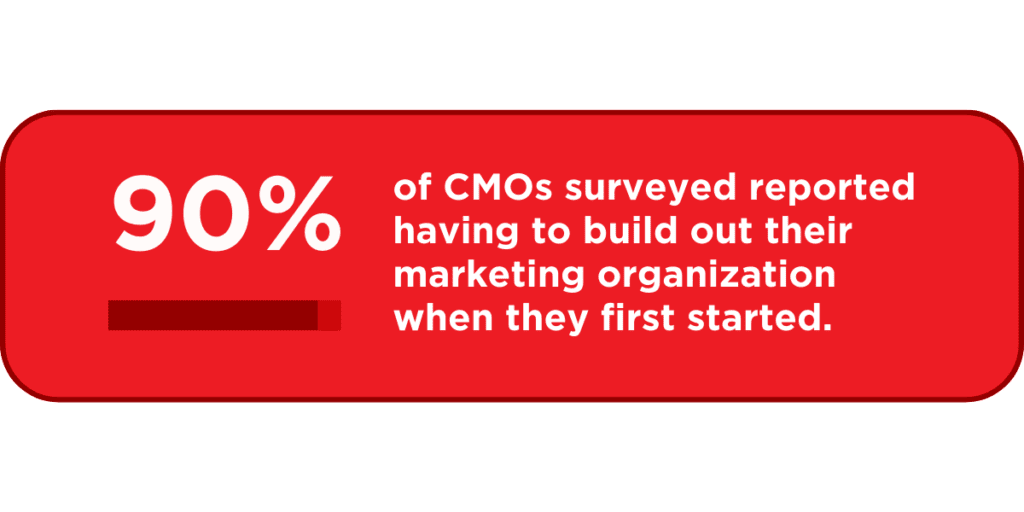
💡“Make sure you’re clear on the CEO’s openness to big changes to the org, especially if the CMO remit is to revolutionize vs. optimize.”
Biggest Skill Gaps in Marketing Organization
The top questionnaire responses below show that the overarching skill gaps are some key elements of modern marketing. The opportunity for an incoming CMO is to get a handle on the gaps early to ensure you have those skills or are ready to build them up. It’s also an opportunity to explore if the org is “allergic” to any of these things, thus the reason it hasn’t materialized.
Top 5 Answers:
- Data and Analytics
- Digital (Acumen & Measurement)
- Integrated Marketing & Planning
- Brand Strategy & Positioning
- Growth Acumen & Innovation
Agencies
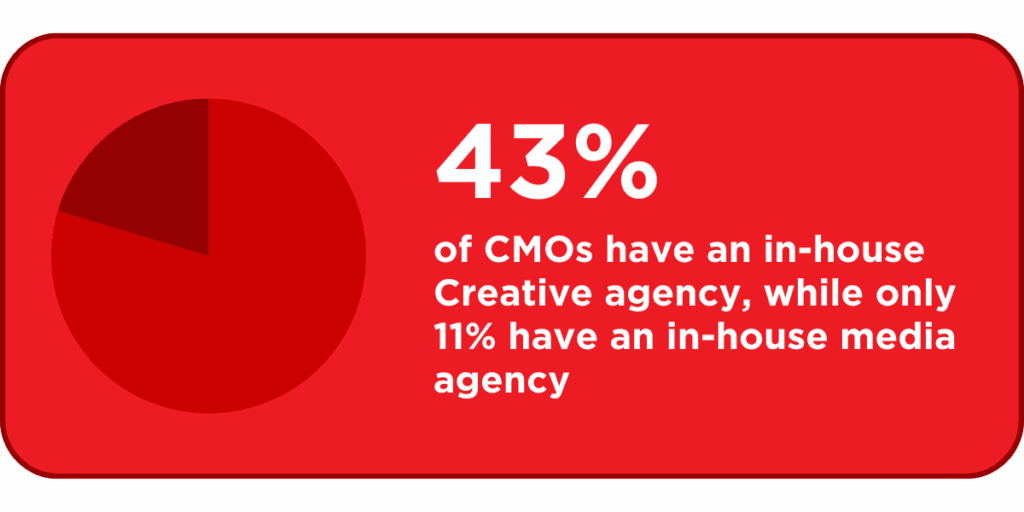
💡”If you have an in-house creative agency, it is at least 6-12 months before you make major changes without inevitable morale challenges. And if you don’t have the mandate up-front to change agencies, it can take a year of convincing and long procurement processes.”
We hope you find this peer-driven collection of insights valuable as you navigate your current and next role. As leaders of the next generation, please consider sharing this guide with those you lead, coach, and mentor so they are best equipped to walk into their future roles. If you are a CMO who would like to contribute a key question, consideration, or tip for fellow marketing leaders, please send it to info@marketersthatmatter.com. Thank you!
Thank you to the following MTM Marketing Board participants, Marketing Board leaders, and all 55+ CMOs in our community who responded to the questionnaire and helped shape this guide.
Heide Palermo, Head of Community and Insights, Marketers that Matter
Nadine Dietz, Co-founder and CEO, Virtuosi LEAP
David Rubin, Chief Marketing and Communications Officer, The New York Times
Dena O’Loughlin, former Head of Marketing, Alchemee
llona Aman, CMO, Fabletics
Jeremy Lowenstein, CMO, Milani Cosmetics
Kalen Thornton, VP, Sports, Entertainment and Gaming, PepsiCo
Katie Babineau, Head of Consumer Marketing – Snapchat, Snap Inc.
Kristin Patrick, EVP and CMO, Claire’s
Mary Renner Beech, Chief Marketing and Transformation Officer, Scholastic
Nii Addy, CMO, Philo
Ricky Engelberg, CMO and Partner, Maximum Effort (former CMO, Vista)
Want in on the fun?

